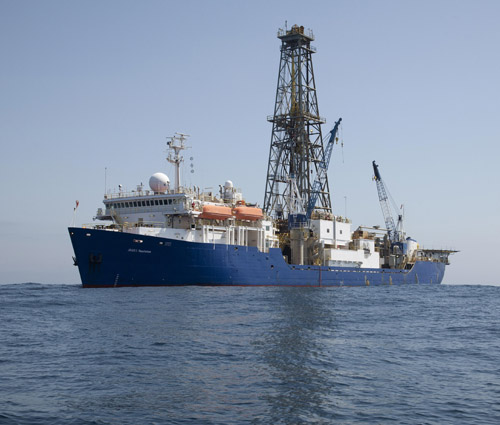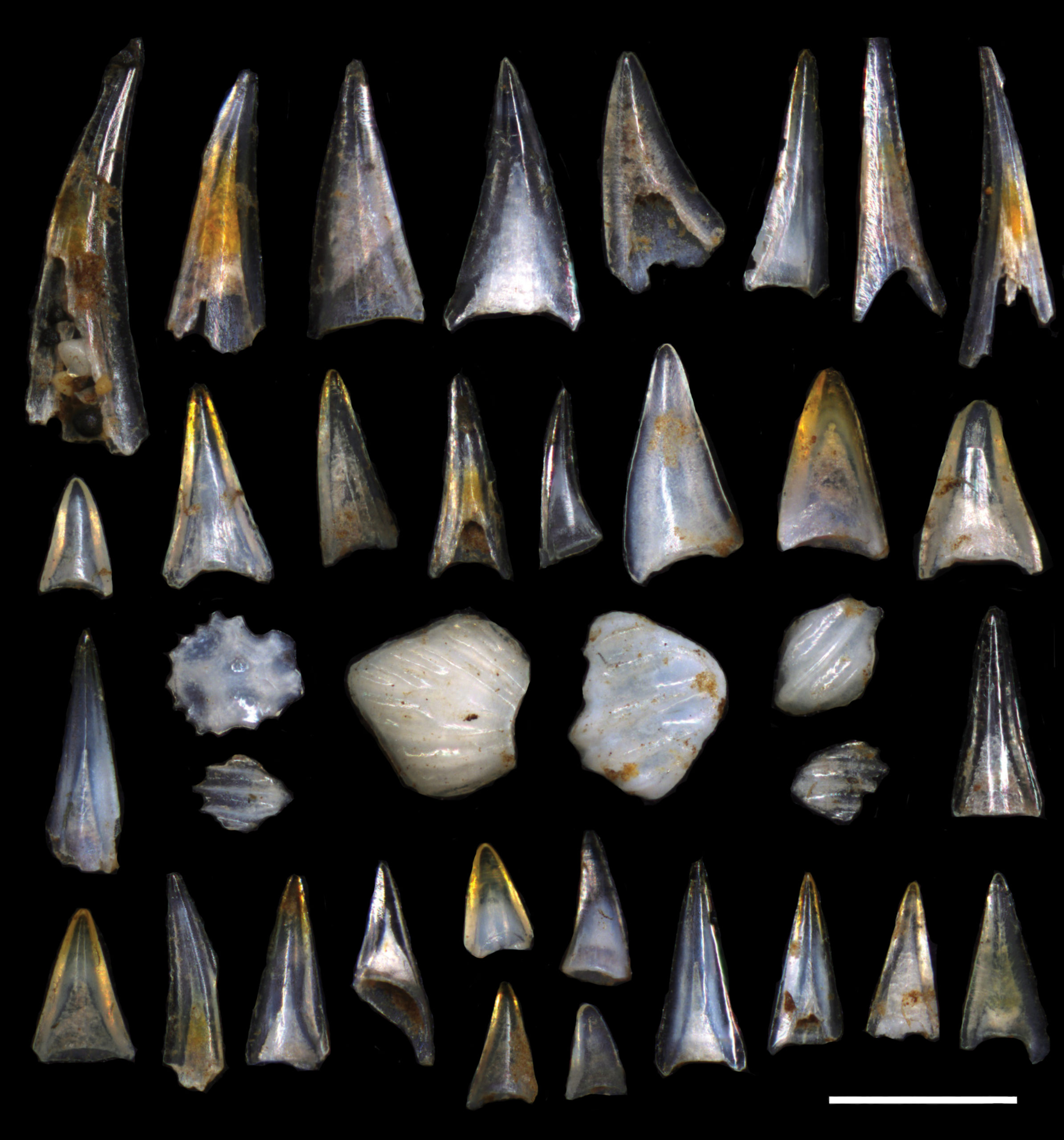Featured Image: Ichthyoliths (microfossil fish teeth) from deep-sea sediment cores displaying the variety of tooth morphology. Photo courtesy of Elizabeth Sibert, lead author of the paper.
Paper: No state change in pelagic fish production and biodiversity during the Eocene–Oligocene transition
Authors: Elizabeth C. Sibert, Michelle E. Zill, Ella T Frigyik, Richard D. Norris
The seafloor at the bottom of the ocean records what is happening in the water above. Sediments capture silica from diatoms and phytoplankton, carbon from zooplankton poop and detrital marine snow, and teeth after dead fish sink. This last piece of evidence is particularly important: fossilized fish teeth or icthyoliths can help estimate past fish abundance and can show shifts in fish species or biodiversity in the ocean over time.
Sediment cores are collected with highly specialized drilling equipment to gain access to the records collected in the seafloor. Since the rate sediment accumulates on the seafloor is very slow, kilometer-deep sediment contains material deposited on the seafloor over tens of millions of years (Mya). Sibert and colleagues took advantage of this slow sediment accumulation to answer the question – did fish populations change at the Eocene/ Oligocene (E/O) boundary (~33.9 Mya) when the Earth transitioned from a warmer climate to the cooler climate with a continually glaciated Antarctica?
Left) Multiple sediment cores on the core sampling table during IODP expedition 342 in summer 2012 in the North Atlantic (Bermuda to Newfoundland).
Right) A singular sediment core after extrusion from the drilling device on IDOP expedition 378 in early 2020. Expedition 378 went from Fiji to Tahiti in the South Pacific.
Photo Credit (left): John Beck, IODP/ TAMU; IODP JOIDES Resolution Science Operator. Photo Credit (right): Tim Fulton, IODP JOIDES Resolution Science Operator.
Drilling expeditions for collecting deep-sea sediments have occurred in the Pacific, Atlantic, Indian, and Southern Oceans, as well as Mediterranean and Red Seas since the mid-1960s. An international cooperative effort both funds and maintains the complex drilling platforms, like the JOIDES Resolution, needed to reach these deep-sea sediments. Even though this effort has gone through many iterations, all projects have a singular focus of extruding ocean sediments for use in better understanding the Earth system in the past.

To answer their question, Sibert and colleagues used sediment spanning 28 to 40 Mya from 7 cores that were collected over the past 60 years and across the world’s oceans. The E/O transition ~33.9 Mya was captured mid-way down their sediment core segments. With colder ocean temperatures, lower sea levels, and continental glaciers, the shift from the Eocene into the Oligocene is hypothesized to have resulted in increased ocean phytoplankton productivity and dramatically higher fish abundance.
Using both abundance and morphology of icthyoliths in the sediment cores, Sibert and colleagues showed that not only was there no change to total fish abundance but there was also no change to the type of fish present at the E/O boundary. There was also likely no change to the primary producers that supported fish populations, especially in the Southern Ocean where the climate changes in the early Oligocene would have had the biggest impact.

Sibert and co-authors challenge the paradigm that a large shift occurred in fish populations following the glaciation events at the start of the Oligocene. Large change in global climate was not met by a restructuring of fish diversity or overall fish populations, especially in the Southern Ocean. Today’s productive Southern Ocean and Antarctic ecosystem with krill, penguins, and whales was not an advent of the E/O transition, rather the krill-dominated ecosystem developed long after the climate began cooling in the early Oligocene. Ocean food-webs today are more efficient at transferring energy than they were millions of years ago, allowing for greater fish populations and greater biodiversity than was seen during the E/O transition.

What do deep-sea sediment cores tell us about past fish populations? by Hadley McIntosh Marcek is licensed under a Creative Commons Attribution-ShareAlike 4.0 International License.




One Reply to “What do deep-sea sediment cores tell us about past fish populations?”